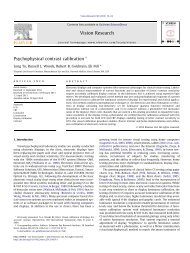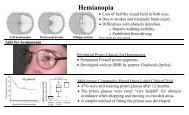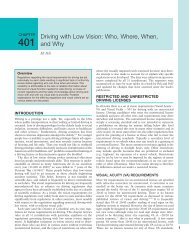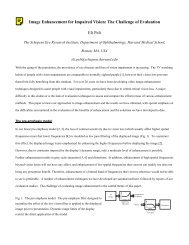SUB-MANDIBULAR (CHEEK-POUCH) BLOOD COLLECTION IN ...
SUB-MANDIBULAR (CHEEK-POUCH) BLOOD COLLECTION IN ...
SUB-MANDIBULAR (CHEEK-POUCH) BLOOD COLLECTION IN ...
You also want an ePaper? Increase the reach of your titles
YUMPU automatically turns print PDFs into web optimized ePapers that Google loves.
Animal Facility SOPRevised on 6/08<strong>SUB</strong>-<strong>MANDIBULAR</strong> (<strong>CHEEK</strong>-<strong>POUCH</strong>) <strong>BLOOD</strong> <strong>COLLECTION</strong> <strong>IN</strong> THEMOUSE1 PURPOSE AND SUMMARYThe collection of blood at a number of time points provides valuable data on diseaseprogression, phenotype and/or pharmacological characteristics of a drug. Other sites forblood collection include lancing the ventral tail vein, puncturing the saphenous vein, orretro orbital blood collection. An alternative methodology, sub-mandibular bloodcollection, will be described here. It requires no anesthesia, takes less than one minute,and allows for repeated collection time points.2 PROCEDURESA.1 Location of superficial temporal veinA.2 Mouse restraint & blood collectionA.3 RecoveryA.4 Lancet Size, Acceptable Blood Volume and Collection FrequencyA.1 Location of superficial temporal veinThe superficial temporal vein runs diagonally across the face from above the orbit to thebase of the ear.Page 1 of 2
Animal Facility SOPRevised on 6/08A.2 Mouse restraint & blood collectionThe mouse is manually restrained with the lateral surface of the head facing the operator.Holding the purpose designed lancet in the other hand, a stab incision is made into thecheek approximately halfway between the ear and the mandible with enough force toproduce a small hole. Drops of blood will exude from the stick point, and are collectedinto a suitable container.A.3 RecoveryAfter the mouse is released it is immediately mobile and alert, and will usually groom thebleeding site. Mice should be monitored for 2-3 minutes after the procedure to assurethat bleeding has stopped. If bleeding continues after releasing the animal, apply lightcompression to the site using a sterile gauze pad or cotton tip applicator forapproximately 5 seconds. If bleeding continues after light compression, direct pressureMUST be applied to the wound until bleeding stops.A.4 Lancet Size, Acceptable Blood Volume and Collection FrequencyLancet sizeMouseLancet size>20 grams 4.0 – 5.0 mmAcceptable blood volume and Collection Frequency (www.jax.org)The average total blood volume of a mouse is about 77-80 ml/kg (0.077-0.080 ml/gm)(Mitruka and Rawnsley 1981; Harkness and Wagner 1989). Without fluid replacement,approximately 0.007-0.008 ml of blood/gm BW can be safely withdrawn (about 0.18-0.2ml of blood from a 25 gram mouse). If scientifically justified and approved by theIACUC, larger volumes (0.35-0.4 ml/25 gram mouse) can be withdrawn, followed byfluid replacement. An equal volume of warmed replacement fluids (sterile LRS or saline)is given subcutaneously following blood collection.3. REFERENCES(1) www.medipoint.com(2) Lab Animal Journal. Volume 32 (9) October 2005.(3) http://jaxmice.jax.org/library/faq/withdrawingblood_amounts.html(4) Reviewed by Karen Krueger, DVM, DACLAMPage 2 of 2
















